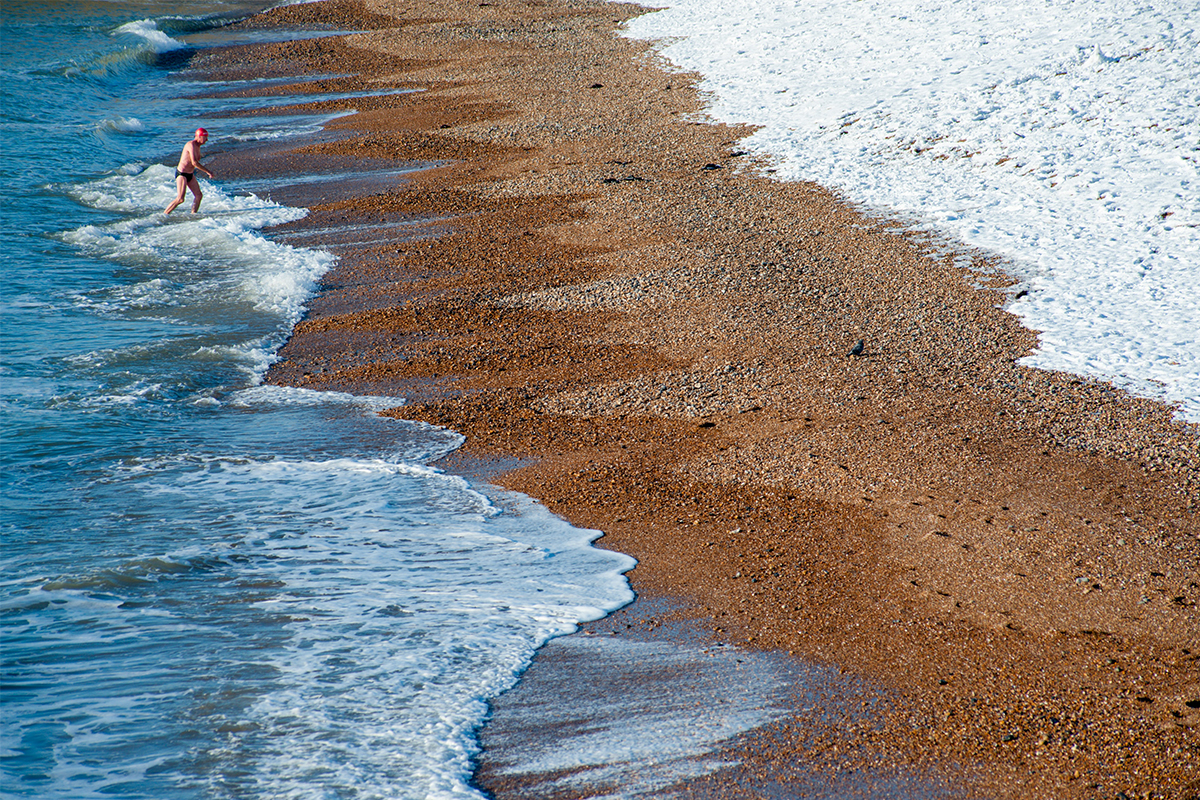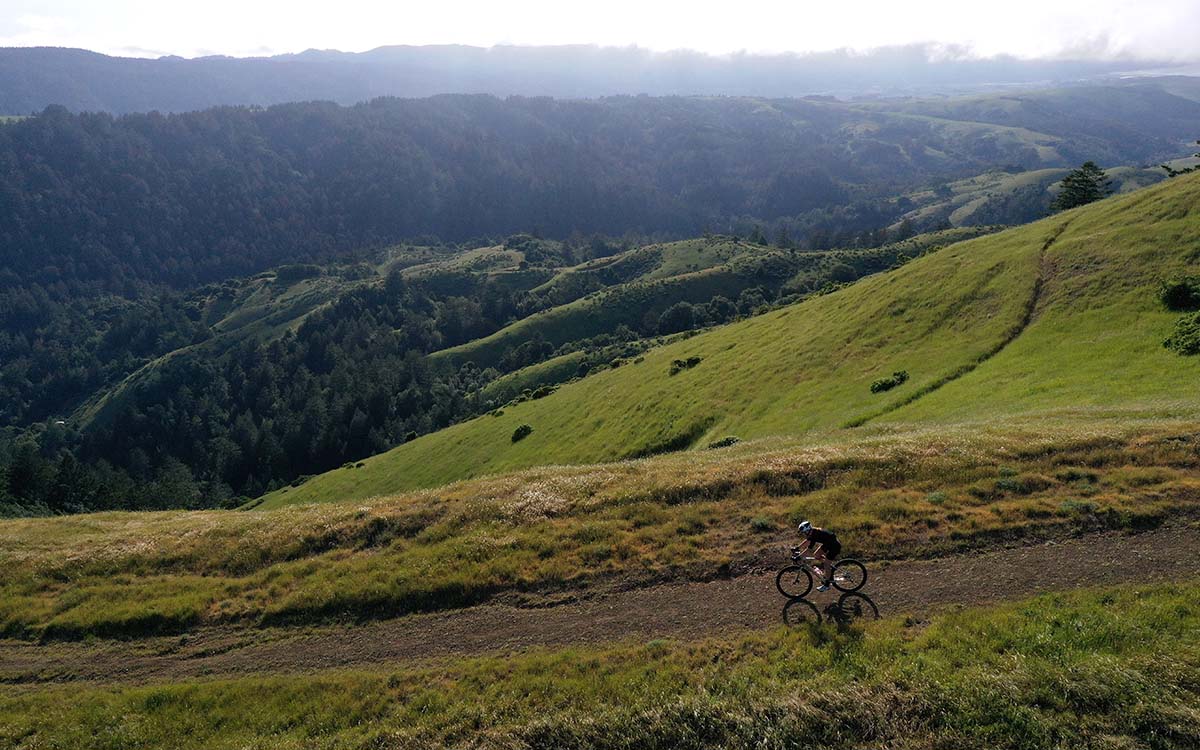Wild swimming is having a multi-year moment. Born in the frigid bogs of Britain and buoyed lately by adventure Instagram accounts, post-pandemic wanderlust and a jovial Dutchman named Wim Hof, the practice of jumping into lakes, creeks and even city harbors has turned into a sort of international pastime. Devotees extoll the practice’s physical and mental wellness benefits — whether they go for a quick dip or get in a proper swim, they head home feeling like a happier, healthier version of themselves.
It’s all left us a bit curious, though: where does the ocean fit into the wild swimming movement? Recreation is already sort of implied in the sea, thanks to the prevalence of surfers, stand-up paddle-boarders and kayakers along any reasonably warm shoreline around the world. But could this new wave of adventurous swimmers also get their kicks in saltwater? Ahead of this summer, how might ocean swimming, specifically, augment one’s fitness regimen?
To answer those questions and a few more, we enlisted the help of Timothy O’Donnell, a champion triathlete who has finished on the podium at multiple Ironman World Championships. O’Donnell chatted with us about safety concerns, water temperature, sample workouts and the gear you might want to pick up before your first salty swim.

It’s the ocean, stupid
For starters, O’Donnell points out, it’s crucial to remember that the ocean “is not a controlled environment.” It’s different than swimming in a lake, and it’s definitely different than swimming in a pool. Before even heading into the water, gather as much information as possible about the beach you’re visiting. Is there a lifeguard on duty? Are any flags waving? Make sure you know what the most important colors mean: red means high surf or strong currents, double red means the water is closed to the public, and purple denotes “dangerous marine life.” That last one could mean stingrays, sharks or even a colony of seals, so keep your wits about you before you enter the water.
Once you are out there, O’Donnell recommend keeping it easy: “All new open water swimmers should stay in their comfort zone. If you’re at a beach break, it’s ideal to swim adjacent to the shore. Get yourself just outside the waves so you can A) still exit the water easily and B) always keep some landmarks in sight on the beach. If the water is calm, then you might try testing your distance and comfort levels. I personally like to swim into or against the conditions first, so that when I turn around I have an advantage for the last bit.”
One thing to keep in mind: rip currents are common. They’re not going to pull you out to sea forever — you can delete that myth from your brain — but they are dangerous. Avoid them by swimming near life guards, and staying away from areas where either the waves aren’t breaking at all, or ocean refuse (foam, reeds, seaweed) is being pulled away from the shore. If a rip current does pull you out, resist the urge to swim straight back towards the beach — you’ll just be fighting the full force of the current. Swim parallel to the shoreline, which will pull you out of the loop and allow you to head back in safely.
Take a deep breath
One of the best ways to stay calm while swimming in the open ocean? Bring a buddy. The National Oceanic and Atmospheric Administration (NOAA) is pretty adamant that people don’t swim alone. Also a good idea: be prepared to breath a bit differently while out in choppier, saltier water. Those steady, unilateral breaths you take in a lap pool can easily turn frenetic when battling winds and currents. This doesn’t mean you have to overhaul your entire process, but there are some small, smart alterations that will make you safer and more efficient in the water.
As O’Donnell notes, “In the open ocean you tend to be more buoyant. I usually have a slower turnover with the added buoyancy, as the water provides more glide and my body is lifted more in water. I do try to breathe on both sides and take longer breaths since I have bigger reach and slower turnover. Combining that breathing with a water polo-style stroke also helps for sighting buoys or landmarks, which helps for knowing you’re headed in the right direction.”
Plus: whenever you do have a decent grasp of where you’re headed, try to “streamline” as much as possible. That’s the move swimmers do at the very beginning of a swim event, when they cruise through the water, limbs tucked together, moving like a dolphin or whale. It creates minimal drag, and allows the body to conserve some energy. It helps, also, to have an elementary understanding of other types of swimming form, know how to turn without the help of a wall and mix in different types of pulls — some long and deep, others short and shallow — in order to give your shoulders a break when necessary.
Bad conditions necessitate badass gear
“Very rarely are you going to jump into a perfect water temp,” O’Donnell says. “Trust me. I love 72-75 degrees, but ideal conditions can be few and far between. Early session usually mean less wind, so if I do get out I love the morning swims. It just tends to be colder.” That said, the triathlete recommends wearing a wetsuit in any water below 75 degrees. This is his preferred suit, from Aquasphere. To be clear, you will probably want the water much warmer than that — something closer to 80 degrees. And know this: if you head out in conditions below 70 degrees (god forbid without a wetsuit), you could be looking at some uncontrollable spasms throughout the body.
Temperature isn’t the only condition to consider; there’s also the sunlight above, which hits harder at certain points of the day, and the salinity of the brackish, cloudy open water. Both can impede eyesight. O’Donnell has some thoughts. “Goggle choice is also a key factor, especially with different light conditions. Early morning swims usually mean you’re dealing with direct sunlight in a single direction. These are my favorite goggles. They offer a wide range of lenses for a a variety of swimming conditions: very sunny, cloudy, mornings with low fog or haze. For those instances, you would actually want to brighten up the visual, so you can enjoy your time in the water.”
Here, have a sample workout
Assuming you’ve got the safety spiel down pat and feel comfortable with your strength and instincts in open water, ocean swimming could be more than a once-a-year novelty, and legitimately part of your summer fitness routine. Setting up workouts is an imperfect science, predictably, but O’Donnell has some tips. “In the pool, we have this ‘there and back’ concept to constitute laps. A length is one direction of the pool. In open water, try to create a course that you can use as a lap for reference; perhaps it’s a loop around a buoy, or identifying a landmark on either end of the beach. If you can use this course repeatedly as you train, you can start to track your progress and any improvements in your swimming.”
What does O’Donnell do for training? “I usually only swim for about 30-40 minutes max in an open water swim. I’ll do an out and back in the same direction. But during race week in Kona we swim the entire marked course, which takes closer to an hour. Thankfully, the water is warm.” For beginners, it’s important to spend a lot of time in a local pool before attempting a workout of that magnitude. Make sure that whatever goal you have in the ocean (expressed in time limit or distance traveled), is something you can accomplish at least twice in the pool.
Is it worth it?
You wouldn’t be wrong to sift through all these tips and disclaimers and conclude that open water swimming sounds a bit high maintenance. It is. There’s a reason why wild swimming in placid lakes and predictable rivers has found so many supporters. But ocean swimming can be a shock to the senses in the best way. O’Donnell sums it up succinctly: “I like the challenge.” More than a quick soak or some low-impact cardio (though sea water does wonders for the immune system and skin), ocean swimming is a bona fide physical challenge: it’ll test your mettle, tighten your core and up your VO2 max. If not this summer, put in the work at the local pool so you can get out there next summer, or whenever the water’s warm. Next time you’re at the beach with friends and family, you’ll be able to show off in more ways than one.
Whether you’re looking to get into shape, or just get out of a funk, The Charge has got you covered. Sign up for our new wellness newsletter today.























